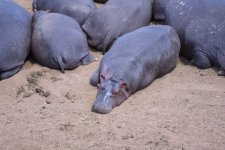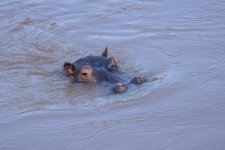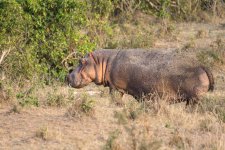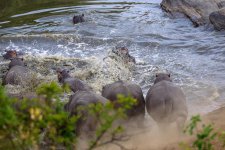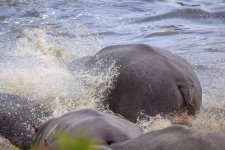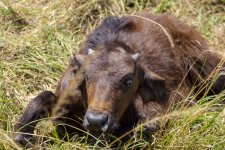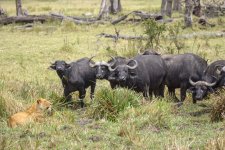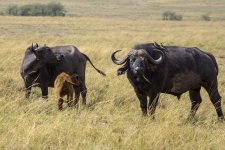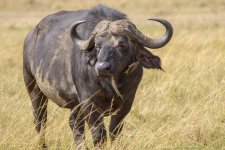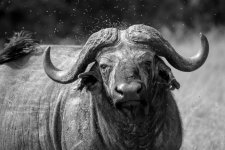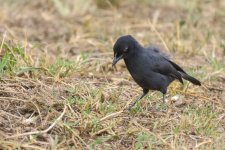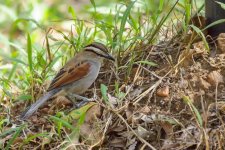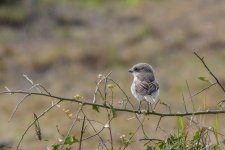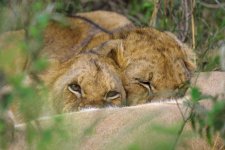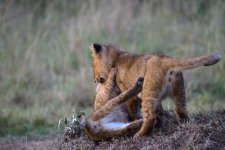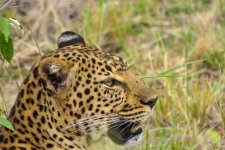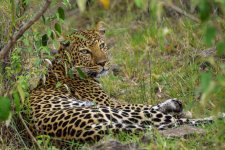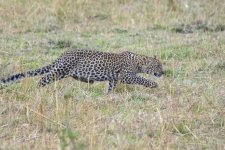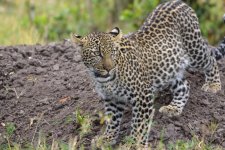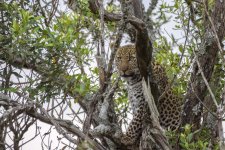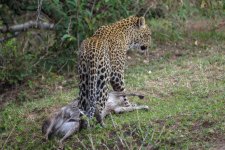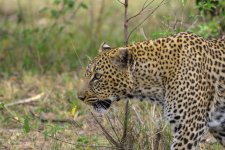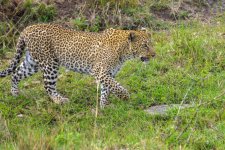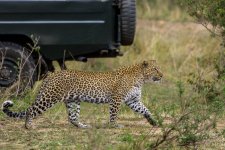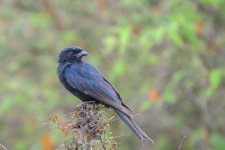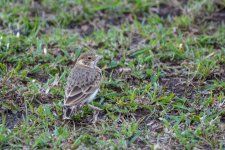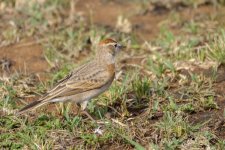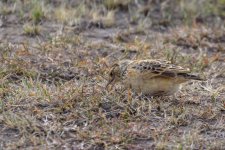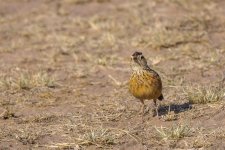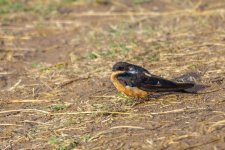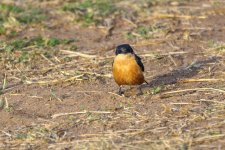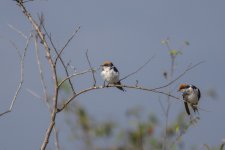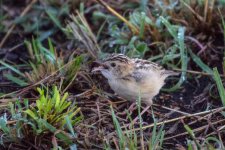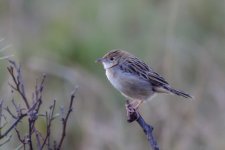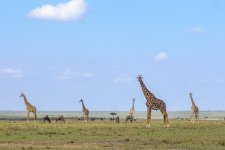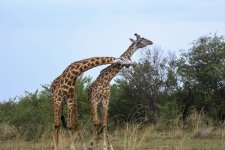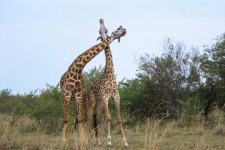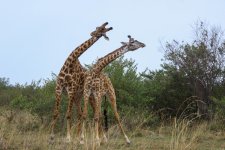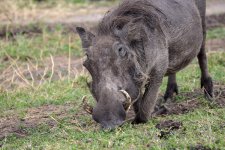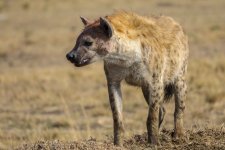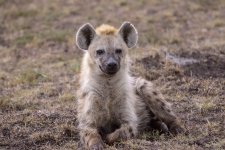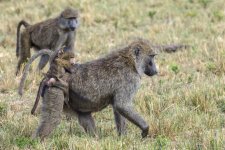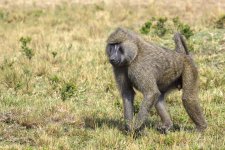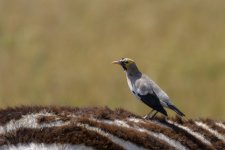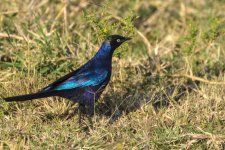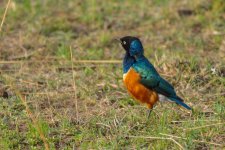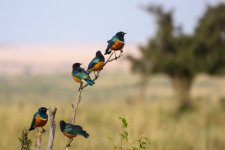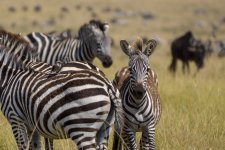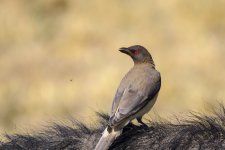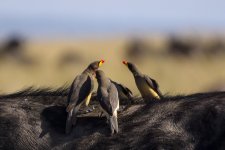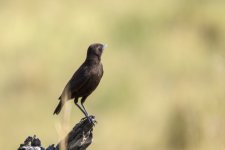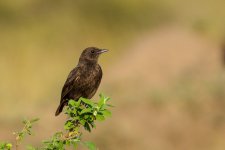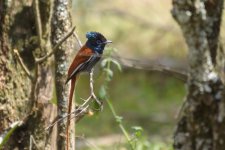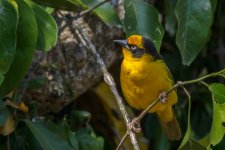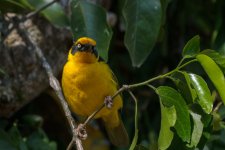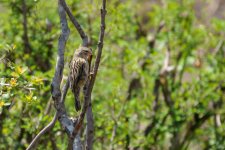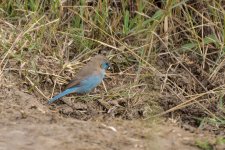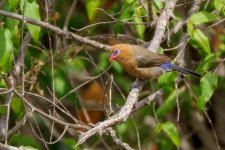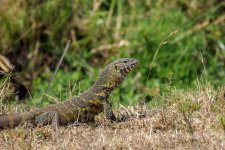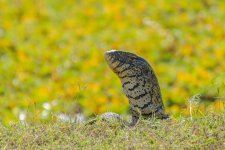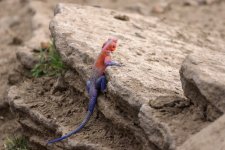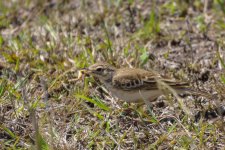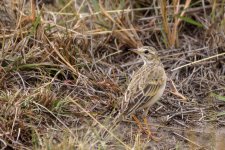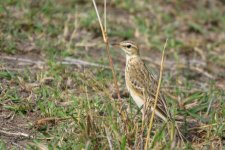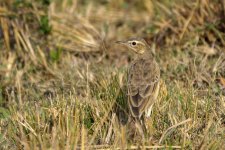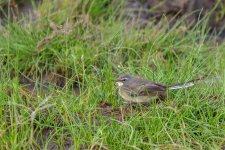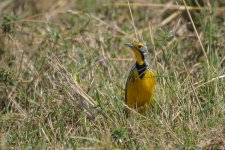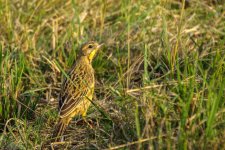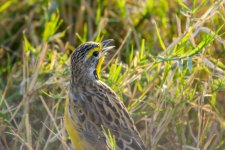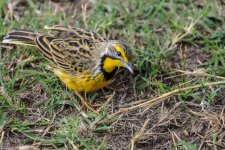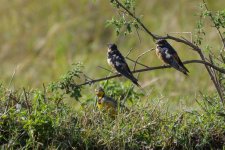kitefarrago
Well-known member
Heavyweights
Having written about elephants in another post there are nonetheless
a few heavyweights remaining.
Rhinoceros is probably top on everybody's list to see. I've been
fortunate enough to see white in Kruger and black in Etosha, so rhino
wasn't very high on my list of mammals. The closest I came to one was
us hearing from another car that one had been seen in the area where
we were bird watching not that long ago. We decided to relocate our
efforts to the part of the brushy area where the rhino had been seen
last. One shouldn't imagine that such a large animal can actually
vanish in a landscape that looks as if it's mostly grassland, but
apparently the rhinos of the Mara have perfected that trick.
There aren't that many rhinos in the Mara these days - estimates I
found say about 30 or so, and they're black rhino. Poaching is a
problem as it is everywhere, and illegal grazing of cattle is
another. I saw cattle herds in the park (and herders on foot who
appeared to be tracking an animal), plus a dead cow. When grass
becomes scarce outside the reserve the locals think nothing of
encroaching on the wildlife in this way, and unfortunately the
authorities let it happen. Cattle are still the most important status
symbol among the Massai and one can only hope that attitudes will
change before too long.
A rhino that was lying down was found by one of our vehicles one day,
and the news was passed on to the others. I decided not to go for it,
but I heard in the evening that everybody who wanted to had seen the
animal, and that with it lying down in the grass it had been a
somewhat underwhelming experience.
Another real heavyweight is the hippopotamus, a species that can be
found in good numbers in all the local rivers. In the early morning
there are decent chances of finding one still on land before
returning to the water, always a somewhat odd sight. And, of course,
there may well be hippos grazing around your tent during the night if
there's grass to be had. Hippos are very quiet - all one hears is the
grass being chewed.
Our funniest encounter with hippos was one afternoon as we were
following a river. There were a number of hippos sunbathing on the
sandy shore, and for some reason they decided that something really
scary (presumably us) was about to arrive. They plunged into the
water with an impact that surely sent a wave all up the river!
I'll add another animal here, the Cape buffalo. These are common, and
photographing them was no problem, including young calves. Buffalo
are a species one should be wary off, and we did witness one very
interesting stand-off between a lioness from the Marsh Pride and a
group of buffalo. Clearly neither side had any intention of budging.
The lioness was wary, and clearly ready to move if she had to. The
buffalos seemed to be nudging each other, inviting others to go
first. `You tell her to get the hell out of here,' one could imagine
them saying. When nothing further happened for some time we decided
to go off.
Lion-buffalo encounters are reasonably frequent, but they mostly
happen during the dark of night. I heard that one of the lion cubs I
saw was later trampled to death by buffalos.
Andrea
1, 2. Typical views of hippo
3. Actuve hippo
4, 5. Hippo stampede
Having written about elephants in another post there are nonetheless
a few heavyweights remaining.
Rhinoceros is probably top on everybody's list to see. I've been
fortunate enough to see white in Kruger and black in Etosha, so rhino
wasn't very high on my list of mammals. The closest I came to one was
us hearing from another car that one had been seen in the area where
we were bird watching not that long ago. We decided to relocate our
efforts to the part of the brushy area where the rhino had been seen
last. One shouldn't imagine that such a large animal can actually
vanish in a landscape that looks as if it's mostly grassland, but
apparently the rhinos of the Mara have perfected that trick.
There aren't that many rhinos in the Mara these days - estimates I
found say about 30 or so, and they're black rhino. Poaching is a
problem as it is everywhere, and illegal grazing of cattle is
another. I saw cattle herds in the park (and herders on foot who
appeared to be tracking an animal), plus a dead cow. When grass
becomes scarce outside the reserve the locals think nothing of
encroaching on the wildlife in this way, and unfortunately the
authorities let it happen. Cattle are still the most important status
symbol among the Massai and one can only hope that attitudes will
change before too long.
A rhino that was lying down was found by one of our vehicles one day,
and the news was passed on to the others. I decided not to go for it,
but I heard in the evening that everybody who wanted to had seen the
animal, and that with it lying down in the grass it had been a
somewhat underwhelming experience.
Another real heavyweight is the hippopotamus, a species that can be
found in good numbers in all the local rivers. In the early morning
there are decent chances of finding one still on land before
returning to the water, always a somewhat odd sight. And, of course,
there may well be hippos grazing around your tent during the night if
there's grass to be had. Hippos are very quiet - all one hears is the
grass being chewed.
Our funniest encounter with hippos was one afternoon as we were
following a river. There were a number of hippos sunbathing on the
sandy shore, and for some reason they decided that something really
scary (presumably us) was about to arrive. They plunged into the
water with an impact that surely sent a wave all up the river!
I'll add another animal here, the Cape buffalo. These are common, and
photographing them was no problem, including young calves. Buffalo
are a species one should be wary off, and we did witness one very
interesting stand-off between a lioness from the Marsh Pride and a
group of buffalo. Clearly neither side had any intention of budging.
The lioness was wary, and clearly ready to move if she had to. The
buffalos seemed to be nudging each other, inviting others to go
first. `You tell her to get the hell out of here,' one could imagine
them saying. When nothing further happened for some time we decided
to go off.
Lion-buffalo encounters are reasonably frequent, but they mostly
happen during the dark of night. I heard that one of the lion cubs I
saw was later trampled to death by buffalos.
Andrea
1, 2. Typical views of hippo
3. Actuve hippo
4, 5. Hippo stampede




